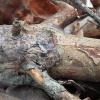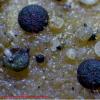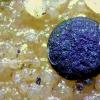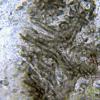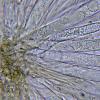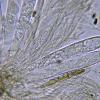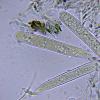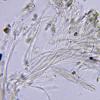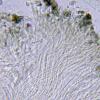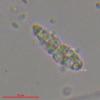
14-09-2012 13:40
Peter ThompsonHello everyone,Does anyone have illustrations of t

18-09-2012 10:54
 Alessio Pierotti
Alessio Pierotti
Qualcuno ha questi lavori ?Doi. 1972 - Revision of

18-09-2012 15:20
 Alessio Pierotti
Alessio Pierotti
Scusatemi ma ho bisogno, per finire un lavoro, di

09-09-2012 22:56
Esquivel-Rios EduardoHi all.I found this specimen growing on a dead lea

18-09-2012 05:40
 Christian Lechat
Christian Lechat
Dear all,as you saw in the database, Thierry Duche

15-09-2012 00:48
Esquivel-Rios EduardoHi all.This is a curious Xylariaceae from a dead t

18-09-2012 02:14
Esquivel-Rios EduardoHi all.Here a Xylariaceae found in a dead trunk

16-09-2012 21:01
Esquivel-Rios EduardoHi all.I found this yellow cup fungi in the soil,
Help with a black discomycete
Josep Torres,
20-04-2024 09:56
A few apothecia collected on Sunday, April 7, under beech and oak trees, on the stripped surface of a trunk lying on the ground, sharing space with what appears to be Orbilia eucalypti.
Ascomas in the form of black grains of about 0.7 mm. in diameter, little rooted in the substrate.
Hyphae of the excipule angular, more or less rectangular, strongly pigmented.
Octosporic asci, apparently bitunicate, with measurements of (75.8) 78.9 - 96.8 (101.9) × (11) 11.1 - 14.4 (16.1) µm. with an average of Me = 89 × 12.9 µm., without any considerable reaction to Lugol.
Interascal matter like a paraphysis, filiform, with a width of just 1 µm, with a dark amorphous substance at the apex and protruding slightly above the level of the asci.
Free ascospores scarce in the samples, these ascospores between fusiform and moriform, with a somewhat more pointed end, with 8 to 10 transverse septa and some longitudinal septa, with measurements of 15.1 - 21.1 × 4.8 - 5.4 µm.
Any suggestion from you will be welcome.
Thank you very much in advance.
Kind regards.
Hans-Otto Baral,
20-04-2024 11:20

Re : Help with a black discomycete
The asci are not really bitunicate like in Patellaria, the wall is too thin. But this is gradual.
Should be Vexillomyces (formerly Claussenomyces) atrovirens or something closely related. The ascoconidia finally form balls around the spores (upper ascus in your first ascus photo) and are ellipsoid.
Josep Torres,
20-04-2024 14:17
Re : Help with a black discomycete
Thanks Zotto.
I didn't know about the ascoconidia balls, and it does fit perfectly with the bibliography that I have been able to consult on Vexillomyces atrovirens.
Vexillomyces atrovirens sl. is therefore very likely.
Again, thank you very much.
Kind regards.
I didn't know about the ascoconidia balls, and it does fit perfectly with the bibliography that I have been able to consult on Vexillomyces atrovirens.
Vexillomyces atrovirens sl. is therefore very likely.
Again, thank you very much.
Kind regards.

